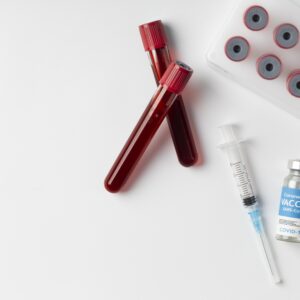The Bleeding Time (BT) Test is a diagnostic test used to assess how quickly blood clots to stop bleeding. It evaluates the function of platelets and the body’s ability to form a clot, making it useful for diagnosing bleeding disorders and monitoring platelet function.
Why is the Bleeding Time Test Done?
Doctors may recommend this test to:
- Detect platelet disorders such as thrombocytopenia (low platelet count).
- Assess blood clotting ability before surgery.
- Diagnose conditions affecting blood vessels or clotting factors.
- Monitor patients taking blood-thinning medications (e.g., aspirin, warfarin).
Test Procedure
- A small incision (usually on the forearm) is made using a sterile blade or lancet.
- The doctor measures how long it takes for the bleeding to stop (typically between 2-8 minutes).
- A blotting paper is used to absorb the blood at regular intervals until clotting occurs.
 Bleeding Time (BT) Test
Bleeding Time (BT) Test Bleeding Time (BT) Test
Bleeding Time (BT) Test